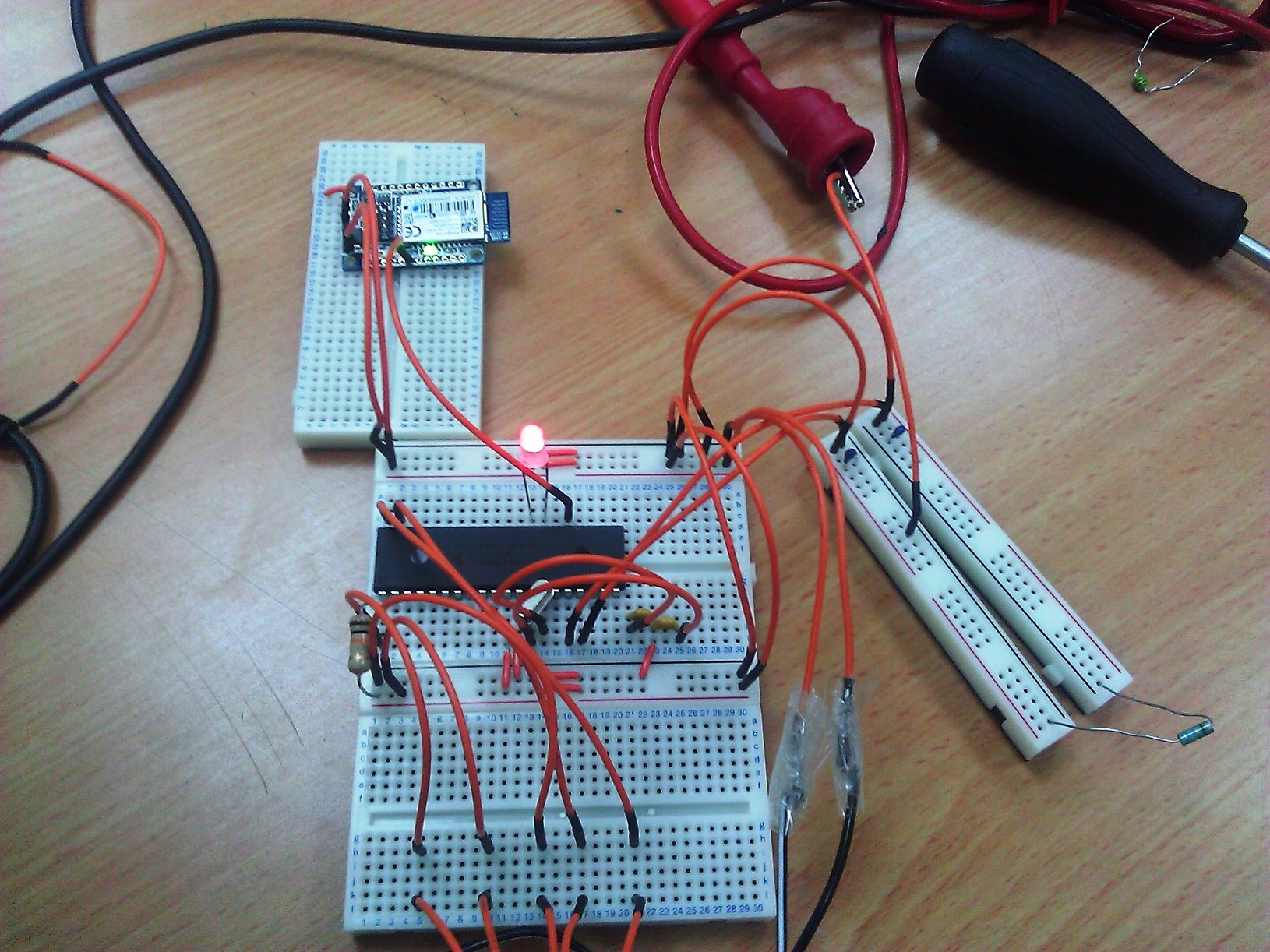metal detecting circuit
I have build a metal detector circuit based on this idea:
http://www.micro-examples.com/public...odetector.html
I'm using a PIC16F877 and a Bluetooth module RN42SM.
I implemented the detector by oscillating a PWM wave via the PIC,
sending it through an inductor, capturing the frequency at the timer1
and transmitting the data via the BT module to a PC.
Up till now the timer's value slightly changes and doesn't give a good indication
for metal detecting. Does somebody have any ideas of how to improve the
detecting?
I tried changing the frequency's value (521-15000hz) and changing the
captures specifications for flag interrupt between every 4-16th rising edge.
Thanks, Amitai

I don't think that this method would give very good results, maybe a better way would to have a 555 oscillator that is controlled by the search coil inductance at say 20Khz and use the PIC to measure the period, changes in the period would indicate the presence of metal. You should be able to get a sensitivity of at least 10 times that of a BFO. You have not shown the search coil, this is perhaps the most important part of a metal detector design.
in total agreement ..............it was an idea, and maybe not a great idea
http://www.thomasathomas.com/Metal_detectors_work.htm
If its based on metal there or not, then metal cutting magnetic flux over inductor should work. But this can not detect metal deep inside something.
If detecting metal in depth and see its shapes, such idea will not work. Best metal detector is X-ray. Other than that it is a inverse scattering problem. There are imaging algorithms that can reconstruct the full 3D shape by sending EM waves to the metal and measure its scattered fields at different locations. Oil and mine exploration, medical non-destructive testing are using the same principle.
Ref:
http://en.wikipedia.org/wiki/Nondestructive_testing
http://en.wikipedia.org/wiki/Inverse_scattering_problem
http://www.columbia.edu/~gb2030/PAPERS/TRM05.8.pdf
http://www.wavenology.com/?page_id=348
- Computing metallic losses for coplanar waveguide | HFSS
- How to Model Metal Surface Finishing in ADS (2014)
- Simulation of a metal cylinder sheet with a periodic openings on the surfaces
- [Moved]: Simulation of metal oxide metal diode
- How to metalize selected faces on a 3D structure? Has anyone ever done this before?
- Q3D unassigned metals
